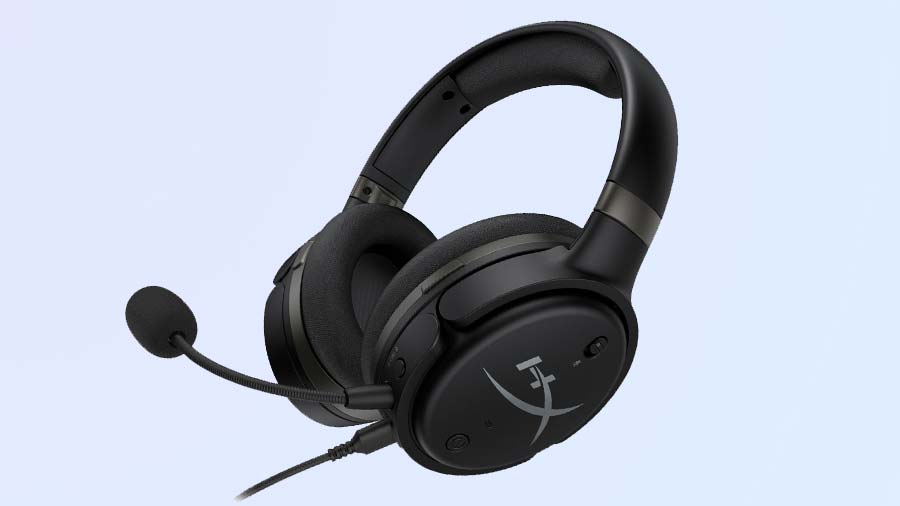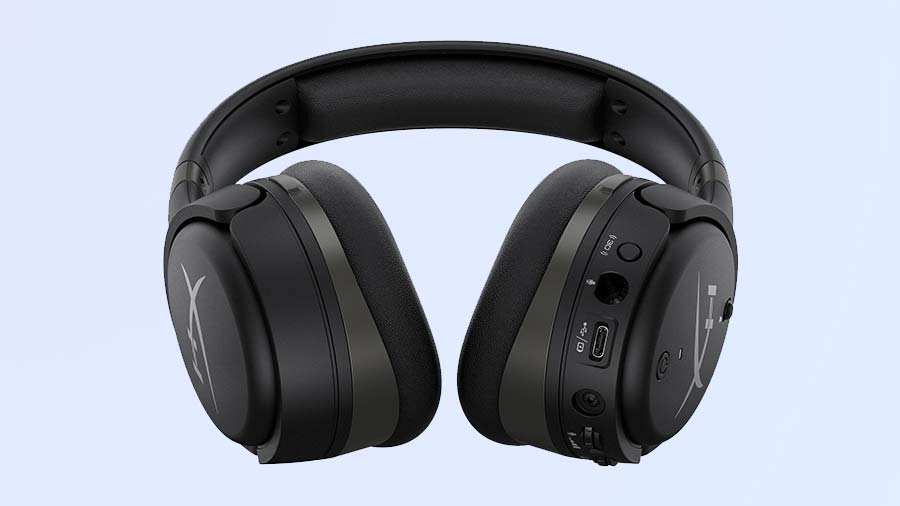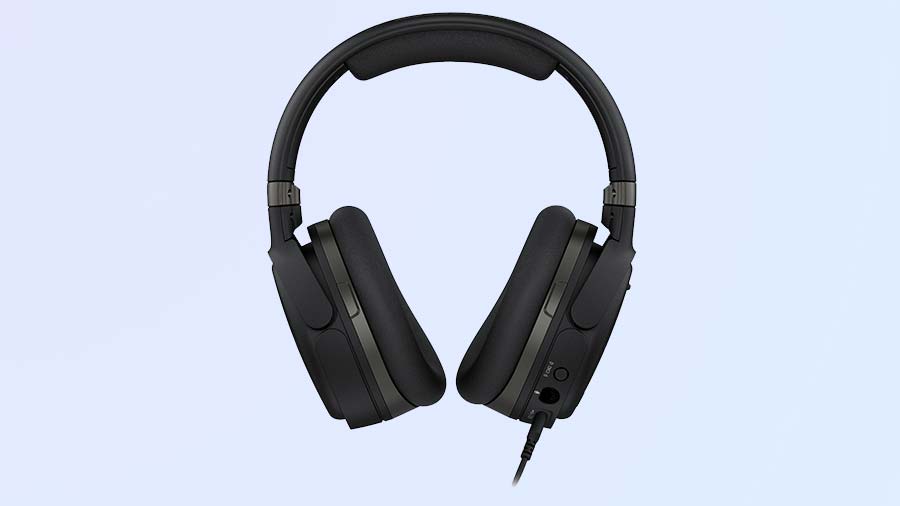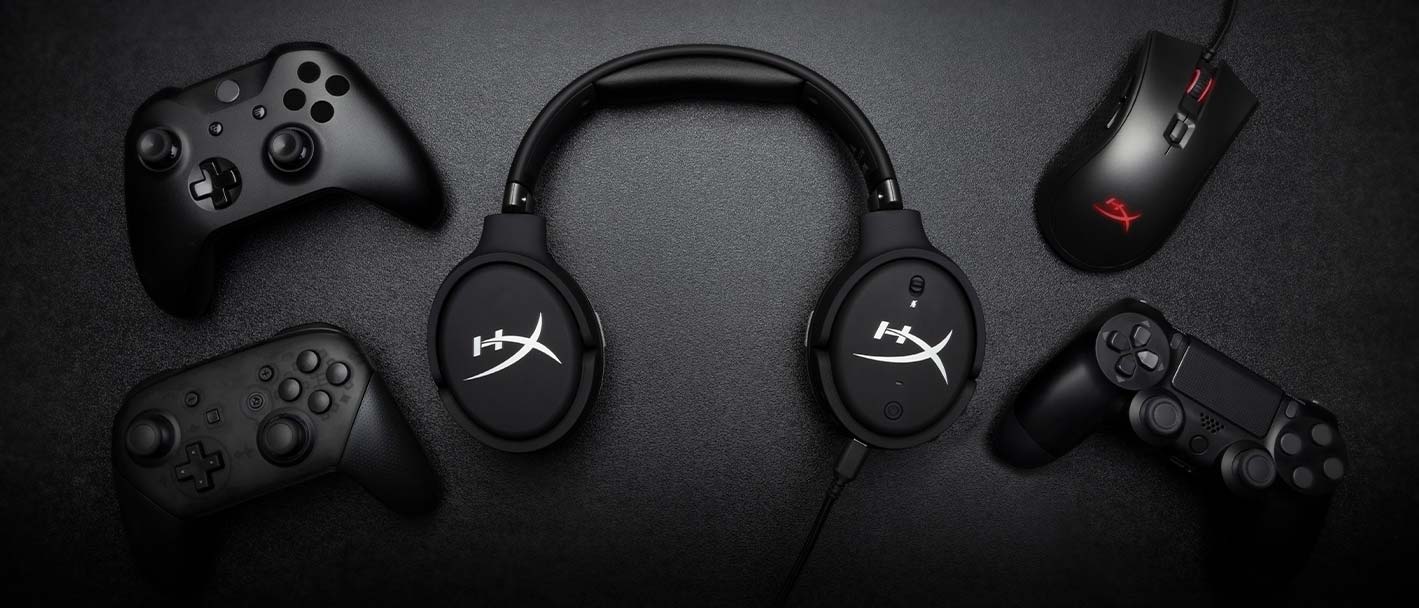Tom's Guide Verdict
Gamers with a lot of different systems who also listen to music at an audiophile level should consider the HyperX Cloud Orbit S. Otherwise, that's a lot of money for features you may not use.
Pros
- +
Great sound
- +
Comfortable fit
- +
Lots of options
Cons
- -
Tedious cord and mode switching
- -
Clunky software
- -
Very expensive
Why you can trust Tom's Guide
With its 3D sound, high-res audio support and bevy of compatibility options, the HyperX Cloud Orbit S ($330) aims high and, from a technical perspective, hits most of the marks. The gaming headset sounds great and feels comfortable. But it's also a convoluted, expensive device that often made me wish for a simpler, more straightforward headset instead.
There are three distinct modes, and every mode seems to have half a dozen submodes. Every button does three or four different things. Every connection works with two or three different devices.
Honestly, it's a lot, and sometimes, it's too much.
Design
There's a lot to unpack about the Cloud Orbit S's design, both physically and analytically. You've got the headset itself, which weighs 12.6 ounces — a little on the heavy side for a gaming headset, but not unreasonable. Sturdy black plastic comprises most of the Cloud Orbit S, with a few silver highlights and HyperX logos for good measure. The design is attractive enough that the headset wouldn't look out of place if you choose to wear it out on a city street.
I have to give special mention to the leatherette ear cups, which are gorgeous, comfortable and breathable. Though I usually prefer foam models, these look and feel premium without trapping in heat. They're arguably the single best thing about the headset's physical design — and it's not at all a bad design otherwise. There's also a detachable, flexible microphone.

It's when you get to the left ear cup that things start getting complicated. There's a power button and a mic mute button on the outside of the cup. On the bottom, there's a 3D audio button, then a mic port, then a charging/USB connection port, then a 3.5 mm port, then a mic volume dial, then an audio volume dial, all very close to one another. And if you think it sounds confusing to have identical-feeling mic and audio volume dials right next to each other, you are correct. Even after using the device for a few days, I would confuse them frequently.

Each of the buttons also pulls double or triple duty, which gets confusing, too. I'll discuss that more in the Features section.
Get instant access to breaking news, the hottest reviews, great deals and helpful tips.
The Cloud Orbit S also comes with three cords: a USB-A cord for PC, PS4 and docked Switches; a USB-C cord for Android phones and handheld Switches; and a 3.5 mm cable for Xbox One controllers and any older systems. Swapping out cables can be a pain, but what's even more grating is using the headset in a living-room setup. The USB-A wire is long enough to reach between a TV and a couch, but I hated having a trip hazard draped across my living room.

Furthermore, the braided cable kept rubbing up against my coffee table, making an unpleasant sound every time I moved my head. The Cloud Orbit S seems optimized for gamers who keep their consoles in a small gaming nook — streamers, for example.
Comfort
Thanks to its large, plush ear cups and padded headband, the Cloud Orbit S is extremely comfortable to wear, even for hours at a time. However, the headset is extremely large. I have a pretty wide noggin, and I didn't have to extend the steel headband at all to get it around my ears. As such, you may not be able to get a perfect fit — and if you can, you'll have to deal with a fairly imprecise system of notches.
I do have some complaints about the braided cable, however. As I said earlier, the braided cable rubs against most materials — especially wood — with an unpleasant grating sound. Furthermore, the USB-A cable is extremely long, with no convenient way to wrap it. When I used it with a PC, the cable got wrapped around my legs like an overambitious python, and it took a little time to extricate both myself and my chair from the tangle.
When I handed the device off to a colleague, he said it was comfortable, and that he had no complaints about the way it felt.
Gaming performance
One of the Cloud Orbit S's biggest selling points is its wide compatibility. It works with five modern gaming systems: PC, PS4, Xbox One, Switch and Android phones. And it sounds great on every one of those devices. From fighting trolls in Baldur's Gate: Siege of Dragonspear on PC to reliving Diamond Weapon's assault in Final Fantasy VII on Switch, the Cloud Orbit S provided clear, nuanced sound across the board.
I paid careful attention to how well the headset worked with action and FPS games. That's because of its Waves Nx 3D audio feature. For those who have never experienced 3D sound before, it's a rather novel concept. When you turn on 3D sound, you calibrate the way you're facing as "center." After that, each time you turn your head, the audio source will "follow" your motions, becoming louder or quieter in one ear, depending on where your head is turned. Imagine standing in front of a speaker, then turning one ear toward or away from the speaker, and you'll have a general idea of the effect.
MORE: Best Gaming Headsets 2019
For what it's worth, the 3D sound worked as advertised, although I didn't find it any more useful than standard stereo or 7.1 surround sound. The Cloud Orbit S has good directional sound, regardless of whether or not 3D sound is activated. The issue is that when you're staring at a stationary screen, you don't move your head all that much, which can make 3D sound more of a nuisance than a boon. I see its potential applications for VR games, but for standard console and PC titles, I have never encountered a situation where it made a game better or more immersive.
That having been said, gunning down foes in Overwatch on PC or sneaking through an enemy fortress in Assassin's Creed Origins on PS4 felt great, thanks to strong directional sound and a rich soundscape overall. Gamers should be able to leverage the Cloud Orbit S for both casual and competitive applications.
Features
The Cloud Orbit S has a tremendous amount of sound modes, to the extent that they can feel a little overwhelming sometimes. You have 7.1 surround sound, stereo sound and high-res sound options, which you can access by pressing down on the mic volume dial. The 3D sound has four different modes. You can also choose equalization options in the specialized Orbit software. It's a lot to keep track of — especially if you're in the middle of a game. I found it was usually better to just set up stereo sound on a flat equalization, and only start fiddling with options if something sounded off.
Even so, the Orbit software has fewer options than I thought it would. You can customize the angle of your 3D sound to a considerable degree, and even program commands to trigger if you tilt your head in a certain direction. But you can't set up profiles for different applications, or adjust mic sidetone, or create your own custom EQ options. These are standard features among much cheaper headsets, such as the SteelSeries Arctis and Razer Kraken lines. Even updating firmware is a clunky process that requires you to download a file separately from the website, then use a browser within the Orbit software to manually kickstart the process.

The mic on the Cloud Orbit S is fine. It does a good job filtering out background noise, and the mic volume wheel gives you a lot of leeway over how loud you want your voice to sound. There's a little too much fuzz to record a podcast or host a high-end stream, but it's fine for multiplayer, and I imagine it would hold up well in a tournament setting.
One potentially obnoxious thing about the headset is that it requires a charge to use, even though it's a wired model. This isn't really a problem when you use it in USB mode, since it will charge as you play. You also get 10 hours of performance in 3.5 mm mode, which is longer than all but the most dedicated binge sessions. But the headset doesn't power off automatically, so you really need to take care that you don't leave it on by accident.
Music performance
Music generally sounds good on the Cloud Orbit S, particularly if you have the Music equalization option enabled. But what really sets the headset apart from many of its cheaper competitors is the high-res audio option. High-res audio support lets you listen to lossless files, like FLAC, and hear music in much greater detail than you would with standard headphones. (Games, movies and TV don't generally support high-res audio.)
If you can stomach both the prices and file sizes for high-res audio (albums cost $25 or more; single tracks consume hundreds of megabytes), it does sound impressive. Listening to Haydn's String Quartet in D, I could not only hear every note from every performer, I could also hear the slight squeak of bows as they lifted off the violins. I don't think a casual listener would necessarily notice the difference, certainly not while riding the subway or reading a book at home. But if you're the kind of person who likes to zone out and really, really focus on music, the Cloud Orbit S could help you do it.
However, it's worth noting that the Cloud Orbit S has not been officially certified by the Hi-Res Audio organization in Japan. JAS certification is not the be-all, end-all of a headset's quality, but fans who want to take no chances should probably steer clear of the Cloud Orbit S, at least for now.
Bottom line
There's a lot to like in the Cloud Orbit S. The sound quality is good, and sometimes great, for both games and music. It's comfortable to wear. It's compatible with a lot of devices. And yet, in my experience, the headset delivered just as much frustration. It's convoluted, it's crowded and it's obnoxious to use in both dedicated PC and living-room setups. In spite of possessing so many features, it's missing a few obvious ones, and I'm not sure that every feature it has is worth the money.
And it does cost an awful lot of money. You can get a great pair of wireless headphones for $150, or an excellent pair of high-end wired headphones with an amp for $250. Asking $330 is not entirely unreasonable, given all that the Cloud Orbit S offers, but unless you're absolutely sure you're going to use all of its features, it's a big ask. Bear in mind that a full console usually costs $300 — or less.
The Cloud Orbit S gets a mild, but tentative, recommendation from me, provided you're the kind of audiophile gamer who wants to experiment with its myriad features. Otherwise, something cheaper and simpler should serve fine.

Marshall Honorof was a senior editor for Tom's Guide, overseeing the site's coverage of gaming hardware and software. He comes from a science writing background, having studied paleomammalogy, biological anthropology, and the history of science and technology. After hours, you can find him practicing taekwondo or doing deep dives on classic sci-fi.

